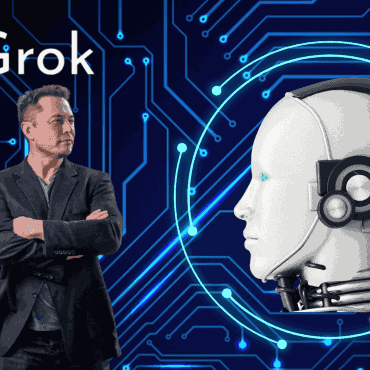The fintech industry in India is expanding rapidly, accompanied by the simultaneous evolution of digitalization, helping people and companies establish their identities online. The dynamics of digital identity verification — which can be described as a one-to-one relationship between people and their digital presence —are at the forefront today. Verifying a person’s digital identity is becoming increasingly essential to sustaining confidence in fintech services, largely because it is used for safeguarding these transactions and providing a higher degree of protection than conventional techniques. A digital presence can comprise multiple accounts, credentials, and entitlements associated with an individual. India is a country that has already implemented a digital identity system — the Aadhar Card.
Causes that Curb
Digital identity verification, however, brings with it a fair share of challenges.
Sensitive personal and business information handled by the fintech industry is vulnerable to security breaches. The industry’s primary concerns are the hidden risks associated with cybersecurity, which, among others like malware, applications, cloud-based security, data breaches, and threats to third-party security, include risks associated with digital identity. To obtain personal information, hackers and cybercriminals are employing a variety of techniques, including social engineering and phishing. They can open bank accounts and construct false identities using this information.
As the cyber security industry grows, many companies are reconsidering their framework keeping in mind these factors. Also, safety is an essential part of fintech solutions for customers.
The second challenge facing the industry is that of biometric authentication, a digital identity verification technique that validates identification using behavioral and physical traits. However, there are several reasons why biometric systems might not validate persons, including environmental conditions, sensor quality, or user behavior.
Confidentiality Concerns
Another obstacle to digital identity verification is the maintenance of privacy. Users are frequently reluctant to divulge personal information online, and for good reason. Fraud and identity theft can be committed using this data. Consequently, it is critical to have a reliable and safe system in place to safeguard consumers’ data. The absence of standards poses another problem for digital identity verification. Users may find it confusing as different finance providers employ various identity verification techniques. Vulnerabilities related to security may also result from this lack of uniformity.
Also, users may find digital identity verification to be a time-consuming process. As a result, having a user-friendly system in place is important. When identification and credentials — such as employee IDs, immunization records, academic credentials, and occupational licenses — are digital, people can deal with them with greater ease. However, this information must be safe and confidential.
Blockchain Solutions
Identity documents are issued traditionally offline by organizations that create and maintain them in a manner that discourages counterfeiting and fraud. A person’s picture or fingerprints, for instance, are just some parameters that associate them with their driver’s licenses. As a result, it holds little value for the person who steals it. On the other hand, people are extremely concerned about identity theft in the digital domain.
To counter this, blockchain is being used by governments, companies, and educational institutions to provide a safe and reliable infrastructure and enhance services. With blockchain, any singular entity, be it the government, business, or any other organization does not handle a user’s identifying credentials. A verified digital identity can reduce risk, and ease complicated online interactions when blockchain technology is used.
Fundamentally, the blockchain can be understood to be a distributed database system that stores and manages transactions by functioning as an “open, shared ledger.” Every record in the database is referred to as a block, and they are all cryptographically connected. There may not be a single point of failure in the system as the same transaction is logged across several distributed database systems. Fundamentally, the blockchain can be understood as a distributed database system that stores and manages transactions by functioning as a shared ledger. Every record in the database is referred to as a block, and they are all cryptographically connected. Here, cryptography is the process of hiding or coding information so that only the person a message was intended for can read it.
Owing to this, it is difficult to change the information in the existing blocks.
Any entity can submit a request to add information to the blockchain. However, before the information is permanently added, it must be reviewed and approved by blockchain operators. This procedure aids in preventing transactions from entering the database that are erroneous or fraudulent. Once an identity is in the blockchain, it can be verified by the blockchain. However, since blockchain was developed and is only available online, it cannot ensure a user’s physical identification. Therefore, ensuring that the identity supplier with the weakest proofing — also known as the weakest link — does not turn into a point of attack for identity takeover on the blockchain network is a critical facet to be investigated.
The immutability of records can be guaranteed by identity on the blockchain. By doing away with pointless human inspections and middlemen, this could simplify user and business experiences. Additionally, it may increase openness, which may lessen the need for government rules like Know Your Customer (KYC).
Blockchain networks that are powered by identity allow for the seamless execution of smart contracts. This, in turn, could aid in the automation and simplification of operations. Growth can be fuelled by enterprises owing to faster execution, lower risks, and lower costs.
Identity Theft Punishable
In the absence of any legal precedent, the parties involved would have to consent to risk, uncertainty, and possibly unlimited liability. In general, large, regulated businesses are wary of taking the lead when the risk is very high and the return on investment is minimal. However, any person using another’s electronic signature, password, or other unique identification feature fraudulently will be punished. Section 66C of the IT Act 2000 provides for up to three years in prison, a fine of up to one lakh rupees, or both.
____________
Written by: Bhavana Pandey













